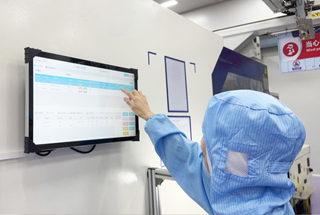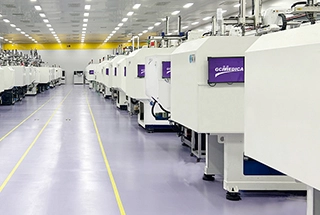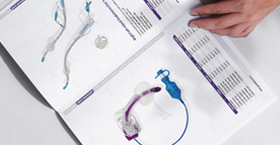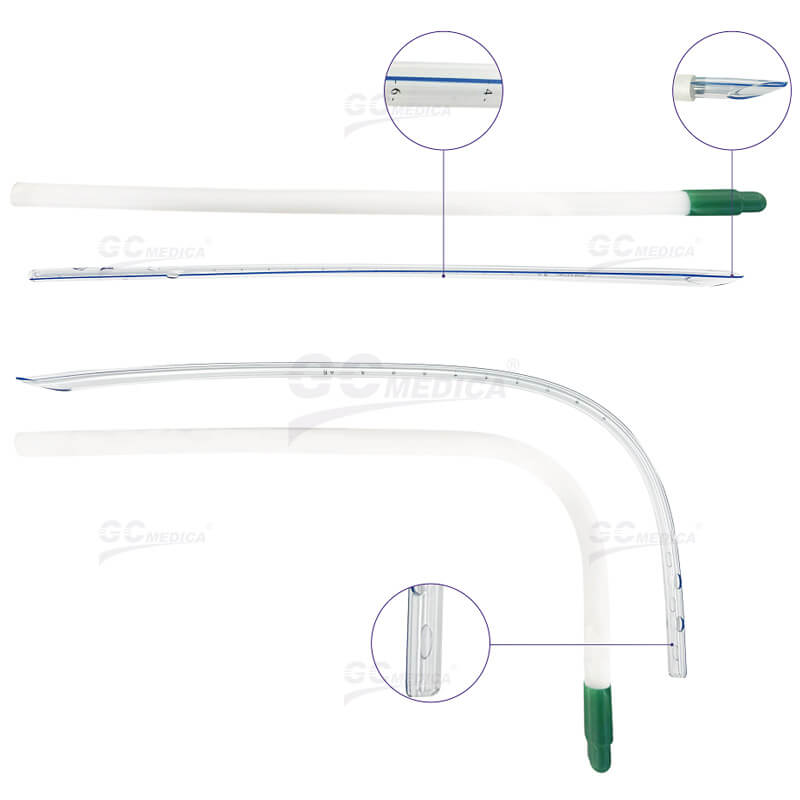Thoracic catheters, commonly known as chest tubes, are flexible drains inserted through the chest wall into the pleural space to evacuate air, blood, pus, or other fluids. By restoring negative intrathoracic pressure, chest tubes re-expand the lung, relieve pneumothorax or hemothorax, and prevent life-threatening mediastinal shift. Indications include traumatic or spontaneous pneumothorax, pleural effusion, empyema, postoperative drainage after thoracic surgery, and malignant effusions. Placement is typically performed at the bedside or in the operating room under local anesthesia and sterile conditions, using the “safe triangle” bordered by the lateral edge of pectoralis major, anterior border of latissimus dorsi, and a line superior to the nipple.
Thoracic Catheter Chest Tube >
Chest tubes consist of a radiopaque, corrugated or smooth-walled catheter of soft but kink-resistant material (silicone, PVC, or polyurethane), a drainage system (underwater-seal or dry-seal), and collection chambers. Suction may be applied via wall suction or portable suction to accelerate fluid removal. Proper fixation and dressing prevent dislodgement and infection. Regular monitoring includes drainage volume and character, lung re-expansion on chest X-ray, and tube patency checks.
Below is a summary of common thoracic catheter (chest tube) characteristics:
| Feature | Small-Bore Catheter | Large-Bore Chest Tube | Specialty Trocar Tube |
|---|---|---|---|
| Outer Diameter | 8–14 Fr (2.7–4.7 mm) | 20–40 Fr (6.7–13.3 mm) | 24–36 Fr (8.0–12.0 mm) |
| Material | Silicone, polyurethane | PVC, silicone | Stiffened PVC with trocar |
| Indications | Simple pneumothorax, small effusions | Massive hemothorax, empyema, postoperative drainage | Rapid decompression in trauma |
| Insertion Technique | Seldinger (guidewire) | Open (blunt dissection) | Trocar (sharp introducer) |
| Advantages | Less pain, easier insertion | High-flow drainage, robust | Quick placement |
| Limitations | Lower flow rate, clog risk | More discomfort, larger incision | Greater risk of organ injury |
| Typical Drainage System | One-way Heimlich valve or small canister | Underwater-seal with suction | Underwater-seal with trocar adapter |
Selection between small-bore catheters and large-bore tubes depends on the nature and volume of pleural contents. Small-bore devices offer patient comfort and are ideal for simple pneumothoraces or serous effusions; however, they may clog when draining thick blood or pus. Large-bore tubes ensure rapid evacuation in trauma or empyema but require larger incisions and may cause more pain. Trocar-style tubes facilitate emergent decompression but carry a higher risk of visceral injury. Regardless of type, adherence to strict aseptic technique, correct positioning (typically at the mid-axillary line in the 4th–5th intercostal space), secure fixation, and diligent monitoring are essential to maximize efficacy and minimize complications.
Related Products


 Français
Français Español
Español Products
Products

 About Us
About Us












